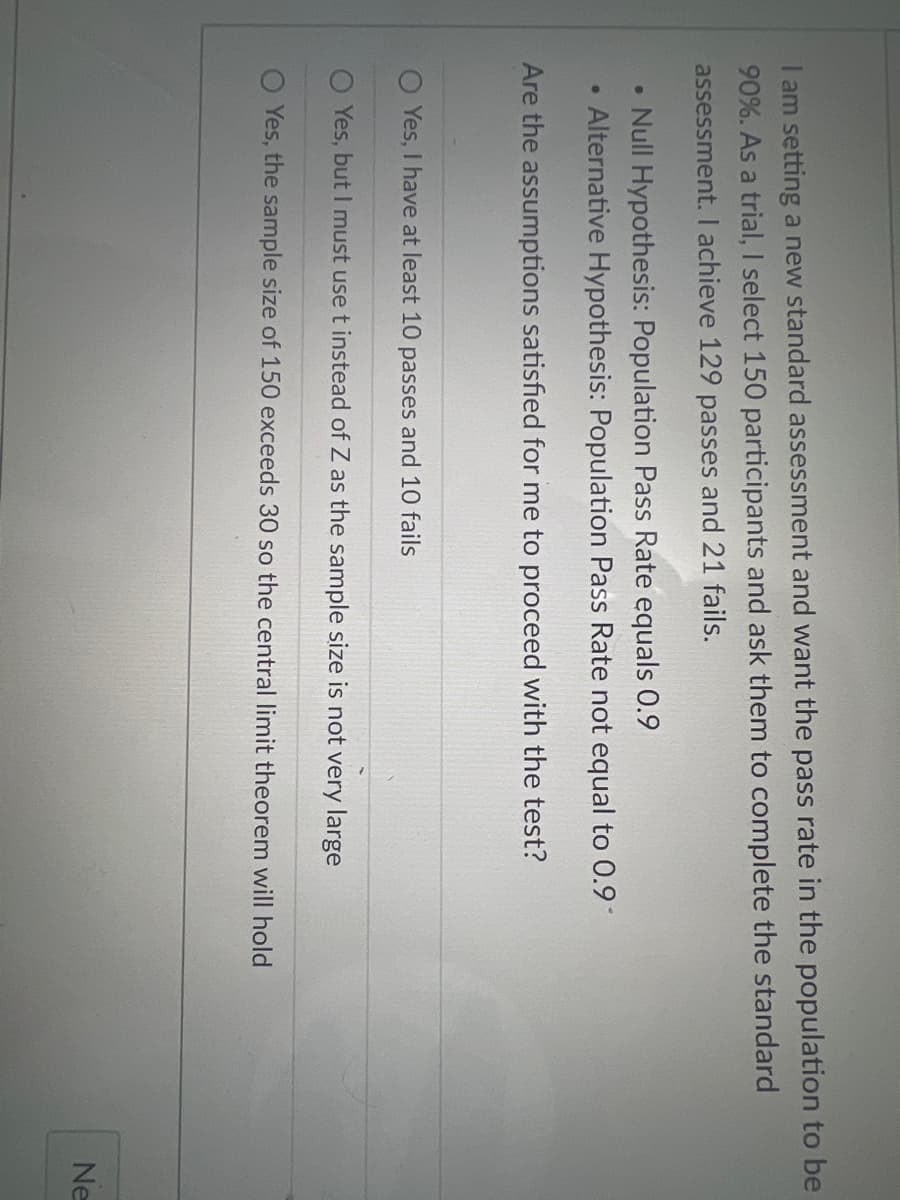I am setting a new standard assessment and want the pass rate in the population to be 90%. As a trial, I select 150 participants and ask them to complete the standard assessment. I achieve 129 passes and 21 fails. • Null Hypothesis: Population Pass Rate equals 0.9 • Alternative Hypothesis: Population Pass Rate not equal to 0.9 Are the assumptions satisfied for me to proceed with the test? O Yes, I have at least 10 passes and 10 fails O Yes, but I must use t instead of Z as the sample size is not very large Yes, the sample size of 150 exceeds 30 so the central limit theorem will hold Ne
I am setting a new standard assessment and want the pass rate in the population to be 90%. As a trial, I select 150 participants and ask them to complete the standard assessment. I achieve 129 passes and 21 fails. • Null Hypothesis: Population Pass Rate equals 0.9 • Alternative Hypothesis: Population Pass Rate not equal to 0.9 Are the assumptions satisfied for me to proceed with the test? O Yes, I have at least 10 passes and 10 fails O Yes, but I must use t instead of Z as the sample size is not very large Yes, the sample size of 150 exceeds 30 so the central limit theorem will hold Ne
Linear Algebra: A Modern Introduction
4th Edition
ISBN:9781285463247
Author:David Poole
Publisher:David Poole
Chapter4: Eigenvalues And Eigenvectors
Section4.6: Applications And The Perron-frobenius Theorem
Problem 25EQ
Related questions
Question

Transcribed Image Text:I am setting a new standard assessment and want the pass rate in the population to be
90%. As a trial, I select 150 participants and ask them to complete the standard
assessment. I achieve 129 passes and 21 fails.
·
Null Hypothesis: Population Pass Rate equals 0.9
●
Alternative Hypothesis: Population Pass Rate not equal to 0.9*
Are the assumptions satisfied for me to proceed with the test?
Yes, I have at least 10 passes and 10 fails
O Yes, but I must use t instead of Z as the sample size is not very large
Yes, the sample size of 150 exceeds 30 so the central limit theorem will hold
Ne
Expert Solution
This question has been solved!
Explore an expertly crafted, step-by-step solution for a thorough understanding of key concepts.
Step by step
Solved in 2 steps with 2 images

Recommended textbooks for you

Linear Algebra: A Modern Introduction
Algebra
ISBN:
9781285463247
Author:
David Poole
Publisher:
Cengage Learning

Linear Algebra: A Modern Introduction
Algebra
ISBN:
9781285463247
Author:
David Poole
Publisher:
Cengage Learning